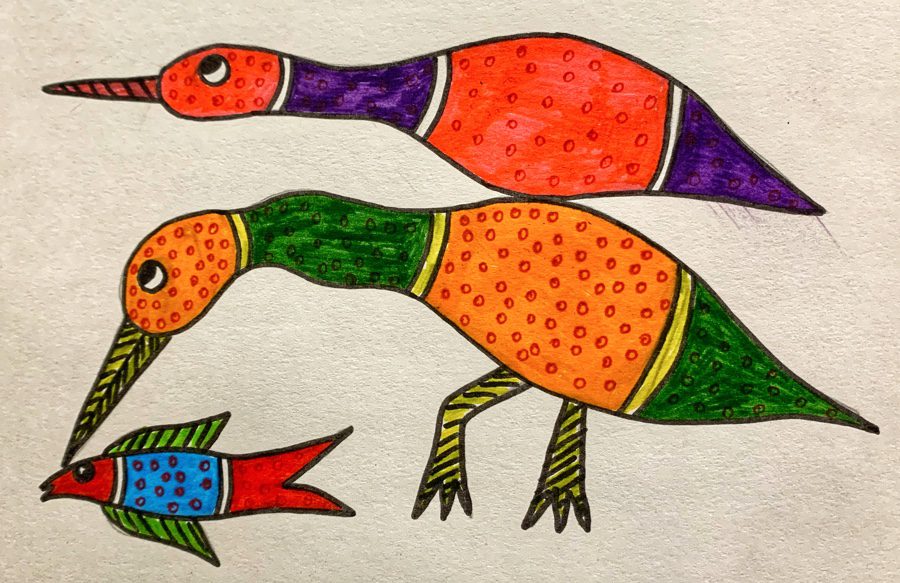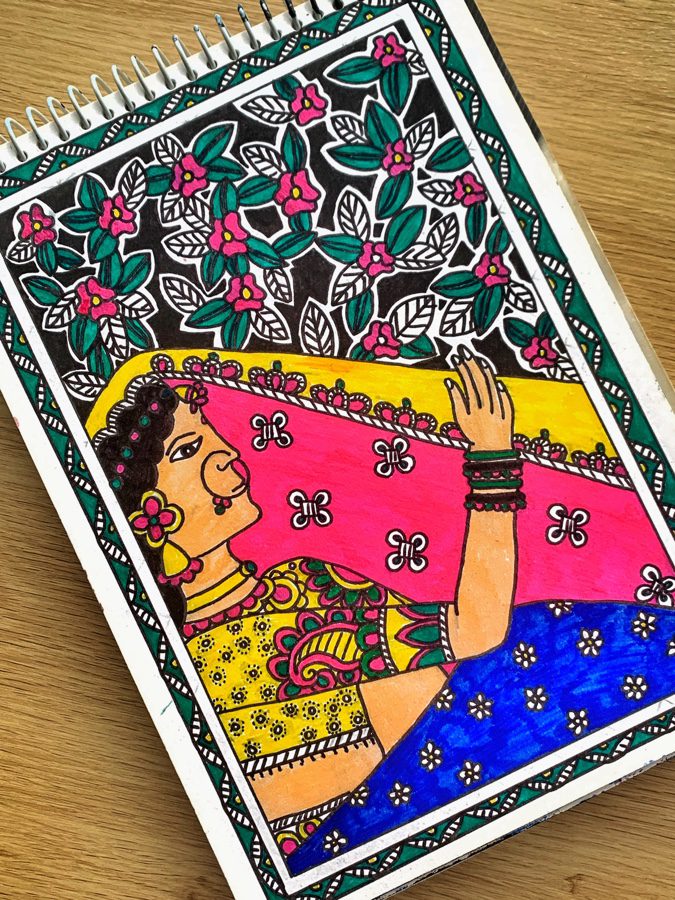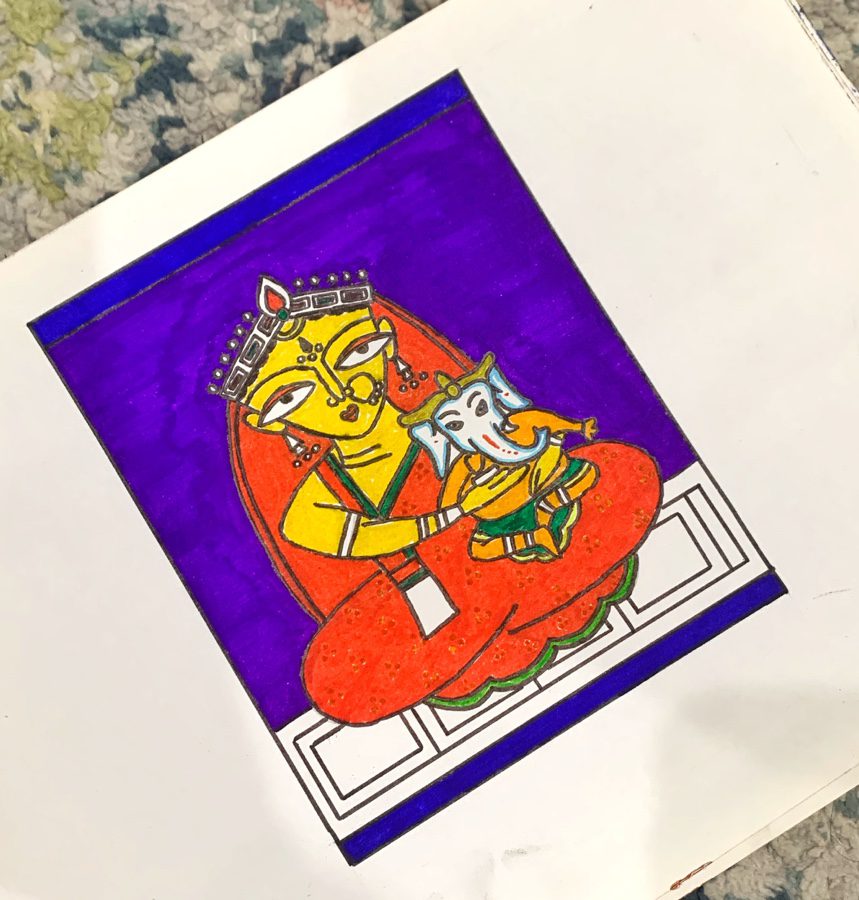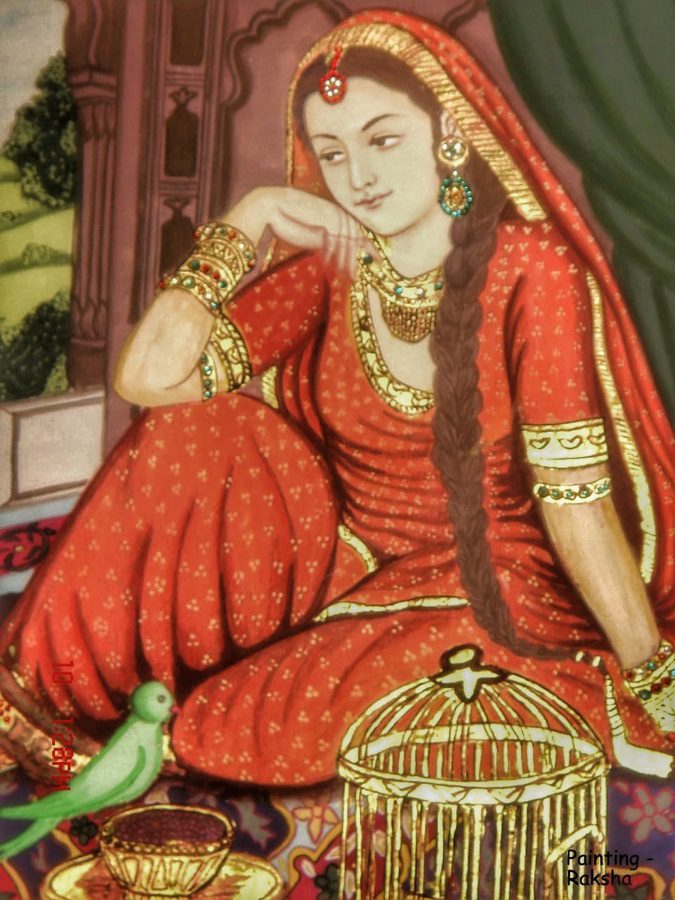Types of Paintings in Indian Culture (2024)
Recently, I rekindled my passion for painting and sketching, delving into the intricate world of art. My newfound interest in exploring diverse cultures, particularly Indian culture, has been enlightening and enriching. With its myriad languages and religions, India boasts a rich tapestry of artistic expression.
Each state contributes a unique art style, playing a vital role in shaping the vibrant mosaic of Indian culture. These traditional painting styles, rooted in history, carry stories of the regions they represent. In this post, join me on a virtual odyssey through the various states of India as I unveil the captivating narratives embedded in their distinctive and time-honoured art forms.
Page Contents
PIN for later reference – Types of Paintings in Indian Culture

This article may contain affiliate links, meaning if you decide to purchase via my links, I may earn a commission at no additional cost to you. For complete information, please see our affiliate disclaimer here.
Types of Paintings in Indian Culture
Chittara Painting – Karnataka
Chittara painting, a traditional folk art form, originates from the Deevaru community residing in Karnataka‘s North and South Canara regions. This artistic tradition utilizes natural resources like rice paste and yellow seeds as its primary medium.
Typically adorned on the walls of houses, Chittara paintings offer vivid depictions of the daily lives of tribal communities. The art serves as a unique and expressive reflection of the cultural richness embedded within the Deevaru community, capturing the essence of their existence through the vibrant hues and intricate details of these wall paintings.
Interesting fact – The fine jute brushes called ‘Pundi’ are used to paint.
- Places to Find a Chittara Painting in Karnataka: Honemaradu, Majina Kannu, and Hasunvanthe of Shimoga district.
- Source: Asia Inch

Design inspired by the artist at Pinvibe
Gond Painting – Madhya Pradesh
Gond painting, a distinctive folk tribal art, originates from the Gond people of Madhya Pradesh. With a rich history spanning 1400 years, the term “Gond” derives from the Dravidian expression “Kond,” signifying the green mountain. These paintings serve as historical records of the tribe, vividly capturing people’s and animals’ daily lives. Natural resources like plants, charcoal, and soil are employed in creating these artworks.
The Gond painting style is characterized by the use of lines and dots to intricately portray details, creating a visually stunning tapestry that not only reflects the cultural heritage of the Gond people but also stands as a testament to the longevity and artistic ingenuity of this ancient tradition.
Interesting fact – Did you know that Gond paintings resemble aboriginal art from Australia?
- Places to Find a Gond Painting in Madhya Pradesh: Jabalpur and Dindori.
- Source: Madhya Pradesh Tourism

Design inspired by the artist at Store Utsav
Kalamkari Painting – Andhra Pradesh and Telangana
The Kalamkari painting, rooted in Andhra Pradesh and Telangana states, derives its name from “Kalamkari,” meaning free drawing from a pen. This traditional art form follows a meticulous twenty-three-step process, employing natural colours. Typically executed on cotton fabric, Kalamkari is an entirely handmade art, showcasing scenes from mythological Hindu stories like Mahabharata and Ramayana.
The intricate process involves using the pen to create detailed depictions, contributing to the region’s rich cultural heritage. Kalamkari paintings serve as artistic expressions and narrate timeless tales from Hindu mythology, making them a fascinating blend of craftsmanship and storytelling.
- Places to Find a Kalamkari Painting in Andhra Pradesh and Telangana: Srikalahasthi, Chittoor, Machilipatnam.
- Source: Lepakshi Handicrafts

Design inspired by the artist at Flipkart
Madhubani Painting – Bihar
Referred to as Mithila painting, the Madhubani style is an art form practised in the Mithila region of Bihar. Originating in the kingdom of Janak, where Sita’s father resided, as narrated in the mythological story of Ramayana, the Madhubani painting was initiated by the women of the Madhubani region.
Craftswomen employ various tools, including twigs and brushes, to create intricate Madhubani paintings. This unique style of artwork was traditionally utilized to adorn the walls of houses, serving as a means to invoke peace and prosperity from the divine. The vivid expressions of Madhubani paintings not only showcase artistic finesse but also embody cultural stories and aspirations of the Mithila region.
- Places to Find a Madhubani Painting in Bihar: Darbhanga, Madhubani, Benipatti, and Ranti.
- Source: Wikipedia

Design inspired by the artist at ‘Swaad‘ YouTube channel
PIN for later reference – Types of Paintings in Indian Culture

Mughal Painting
Mughal paintings primarily exist in miniature art, originating during the Mughal Era spanning the 16th to 18th centuries. The Mughal artistic style predominantly involved the creation of portraits, occasionally featuring depictions of animals and plants. These intricate paintings were typically crafted within books or compiled into albums.
Regrettably, specific information regarding the current locations of Mughal paintings in India is not available. Locating these historical artworks may require further research or consultation with cultural institutions, museums, or art galleries specialising in preserving and showcasing Mughal art.

Design inspired by the artist at Indian Miniatures
Pattachitra Painting – Orissa and West Bengal
Pattachitra painting is an artistic tradition rooted in the eastern states of Orissa and West Bengal. Renowned for portraying mythological Hindu narratives like the tales of Goddess Durga or Lord Jagannath, this art form derives its name from the Sanskrit language—where “Patta” signifies cloth, and “Chitra” means a picture.
Consequently, Pattachitra paintings are typically created on fabric, weaving vibrant visual narratives that bring to life the rich mythological stories of Hinduism. The intricate details and symbolic representations in these artworks not only showcase the artists’ skill but also serve as a captivating window into the cultural and religious heritage of the eastern regions of India.
Orissa
The Pattachitra painting style in Orissa traces its roots back to the 5th century BC, with the most exemplary works discovered in the Puri region. Recognized as one of the oldest living forms of art globally, this tradition was diligently practised by artists known as Mohapatras.
In Orissa, these intricate paintings are executed on cotton-based cloth, showcasing a unique and vibrant aesthetic. The colour palette typically includes traditional hues such as red, green, yellow, white, and blue, contributing to the distinctive charm of Pattachitra paintings. The art form not only reflects the rich cultural history of Orissa but also stands as a testament to the enduring legacy of this ancient craft.
- Place to Find a Pattachitra Painting in Orissa: Raghurajpur (Puri).
- Source: Wikipedia

Design inspired by the artist at Heart for Art
West Bengal
The origin of the Pattachitra painting style in West Bengal can be traced back to the 1st century AD. These paintings are mentioned in various pieces of literature and folktales, with the earliest references appearing in Buddhist literature from the same period.
In West Bengal, Pattachitra paintings are created on silk-based cloth. The primary colours employed in this region are yellow and white. Notably, all the colours used in these paintings are derived from natural resources, such as chalk dust. This approach reflects the creators’ artistic ingenuity and aligns with the tradition of utilizing environmentally friendly materials in this ancient and culturally rich art form.
- Places to Find a Pattachitra Painting in West Bengal: Birbhum, Jhargram, Bardhaman, and Murshidabad.
- Source: Wikipedia

Design inspired by the artist at Salebhai
Pithora Painting – Gujarat
The Pithora painting style is a traditional art form practised by the Rathwaas and Bhilalas tribal communities in Gujarat. These paintings serve as expressions of gratitude to God or as a means to seek the fulfilment of specific wishes. More than just an art form, Pithora painting is considered a ritual within these communities. Typically, the paintings adorn the inner three walls of houses, showcasing the spiritual and ritualistic significance embedded in this unique form of tribal expression.
Interesting fact – The process of preparing the three walls of the house for Pithora paintings involves treating them with two layers of cow dung and one layer of chalk powder. Unmarried women are traditionally responsible for acquiring these materials. This entire procedure is known as Lipna, an integral step in the ritualistic practice of Pithora painting in the homes of the Rathwaas and Bhilalas tribal communities in Gujarat.
- Places to Find a Pithora Painting in Gujarat: Tejgadh.
- Source: Openart

Rajput Painting – Rajasthan
The Rajput painting style, originating in the 17th century, portrays narratives from the royal courts of Rajputana and stories from the epics of Ramayana and Mahabharata. Using colours derived from minerals, shells, and plants, creating a Rajput painting is meticulous and time-consuming.
Typically, it takes several weeks to complete a single painting, highlighting the dedication and craftsmanship involved in bringing forth the vibrant and intricate details that characterize this traditional art form rooted in the cultural heritage of Rajputana.
Interesting fact – The famous Rajput paintings were once miniature paintings.
- Places to Find a Rajput Painting in Rajasthan: Rajput paintings are associated with four distinctive art schools. These exquisite artworks can be discovered in various locations, including Bundi, Kota, Bikaner, Jodhpur, Udaipur, and Jaipur.
- Source: Wikipedia

I had taken classes to do this painting; unfortunately, I do not remember the artist’s name.
Warli Painting – Maharashtra
The Warli painting style, a tribal art form originating in the Western Ghats of Maharashtra, India, dates back to the 10th century. This folk art revolves around the elements and concepts of Mother Nature. Typically executed on the walls of huts, Warli artists employ a set of geometric symbols such as triangles, squares, and circles to create their paintings.
The symbolism in Warli art is intimately connected to nature, where the triangle signifies mountains and pointed trees, the square represents human inventions, and the circle embodies the sun and the moon. This art form reflects a profound connection between the Warli community and the natural world, capturing the essence of their cultural and environmental consciousness.
Interesting fact – Warli paintings do not accept contemporary culture.
- Places to Find a Warli Painting in Maharashtra: Dahanu, Jawhar, Mokhada, Palghar, Talasari, and Vikramgad.
- Source: Wikipedia

Design inspired by the artist Smita Sumant
Closing Notes
As an expansive country, India boasts many folk art and traditional painting styles beyond those mentioned in this post. The cultural tapestry of India is genuinely one of the oldest and most extensive in the world, steeped in rich history. This post represents my endeavour to document and share insights from my research, offering a glimpse into India’s diverse and vibrant artistic heritage. I hope you have enjoyed this virtual journey through the kaleidoscope of Indian paintings, each telling a unique story and contributing to the intricate mosaic of the country’s cultural legacy.
How can you support me?
You know how much I love coffee, so you can buy me a coffee – Buy me Coffee!
Or you can purchase from one of the below travel resources without any extra charge to you:
Travel Resources
Book your flight on Skyscanner.com or Trip.com
Reserve your accommodation on Stay22
Reserve your stay at a hostel on HostelWorld
Use RentalCars or DiscoverCars for hiring self-driven cars
Book your tours and travels or purchase tickets on Viator or GetYourGuide
For a universal SIM card, use DrimSim
Buy comprehensive travel insurance on SafetyWing and WorldNomads
If you liked this article and if it was helpful in your planning or travelling, do share, tweet, or pin this post.
Follow me on Instagram | Facebook | YouTube | Twitter | LinkedIn
Do you have a question? Do you want any suggestions and tips for travel, hikes, and scuba dives? Use the Subscription box below to sign up and get updates by email.
You will also love reading:
PIN for later reference – Types of Paintings in Indian Culture

